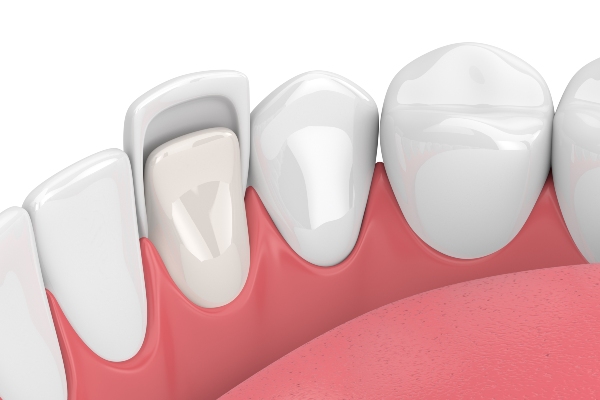 Dental veneers can transform a smile. The American Dental Association defines these as "thin, custom-made shells crafted of tooth-colored materials designed to cover the front side of teeth." These restorations are typically made of porcelain or resin and can last for many years. There are some situations in which veneers need to be replaced; most of these occur as a result of normal wear and tear on the teeth. Patients should seek dental care when noticing certain things about existing restorations.
Dental veneers can transform a smile. The American Dental Association defines these as "thin, custom-made shells crafted of tooth-colored materials designed to cover the front side of teeth." These restorations are typically made of porcelain or resin and can last for many years. There are some situations in which veneers need to be replaced; most of these occur as a result of normal wear and tear on the teeth. Patients should seek dental care when noticing certain things about existing restorations.
Situations in which veneers should be replaced
Because some tooth structure is removed during the veneer procedure, a patient must keep a crown or veneer on the tooth for life. Cosmetic restorations can be replaced when the patient no longer likes the shade of the teeth. They should also be replaced if broken or causing decay in the tooth.
Excessive stains
While porcelain veneers tend to resist staining more than resin ones, both kinds can become discolored over time. If a patient uses tobacco or drinks beverages such as coffee, tea, and red wine, the teeth become stained faster.
Teeth whitening products can be used on a patient's natural enamel to change the shade of the tooth. However, this does not work with veneers. The bleaching material will etch the surface of the porcelain or resin and damage it. Therefore, if a patient wants to change the shade of the teeth, replacement is the only choice.
Cracks or breaks
Biting into hard foods can cause microcracks in a veneer over time. Eventually, the teeth begin looking noticeably cracked from chronic wear. This type of restoration can become weakened over time and break or chip off. This is much more common with resin (composite) veneers, but it can happen with porcelain ones as well.
When a break happens, the dentist usually advises the replacement of one or all the veneers. When coupled with a patient's dislike of the shade of the teeth, replacement becomes the logical option.
Dental decay
When a patient chooses to get veneers placed on the teeth, commitment to good oral hygiene is paramount. The margins around these restorations can become plaque traps if not cleaned properly. When this happens, cavities begin to form under the veneers. This can lead to a loss of a tooth if not treated promptly.
If a dentist detects a cavity under this type of restoration, they will likely recommend replacement. The existing veneer is taken off, the cavity is cleaned out, and a new restoration is placed on the tooth.
Conclusion
For patients wanting to change the size, shape, or shade of the teeth, veneers can be a worthy treatment to consider. When a patient does choose this route, it is important to know when replacement is needed. A healthy, beautiful smile can be treasured for years to come. Patients interested in this cosmetic procedure should discuss it with a dentist to see if it is the right option.
Request an appointment or call Sonoran Desert Dentistry at 480-439-0117 for an appointment in our Scottsdale office.
Recent Posts
Dental veneers can improve your dental health. Your dentist can present many types of this dental restoration. Understanding the types of veneers available can broaden your options. Here are the different types of dental veneers that you must consider.These are the most common types of dental veneers. The material in these restorations is feldspar, which…
Dental veneers are often more advantageous than other cosmetic dental procedures. Some cosmetic dental procedures are quick but need retreatment. Others need preparation and months to be effective. Veneers take a short time to get but can last for at least a decade with proper care and maintenance. Knowing the benefits of these restorations over…
Dental veneers help patients achieve a picture-perfect smile. However, these wafer-thin shells go over the natural teeth, which begs the question: Are dental veneers comfortable? When installed correctly, veneers feel just like your real teeth. In this article, we will explore veneers, how they work, and how they manage to feel and look natural.Veneers help…


